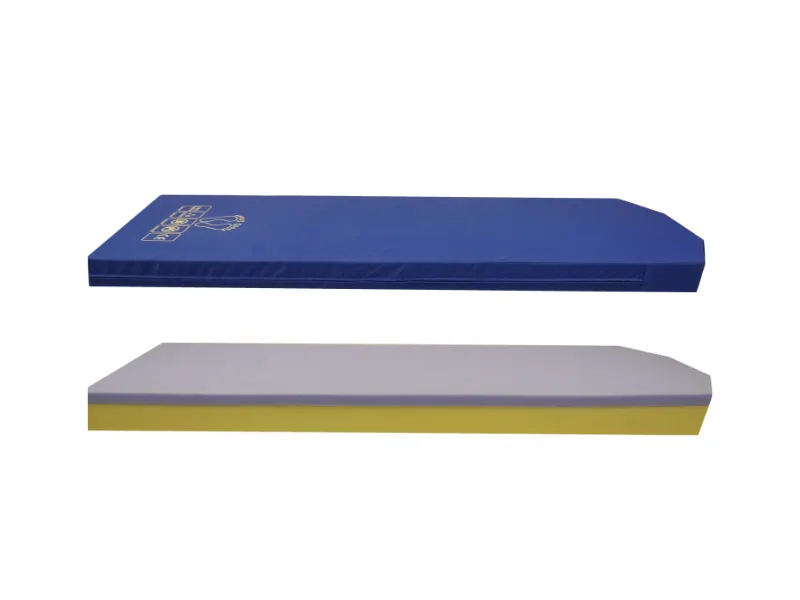Selecting the Best Hospital Bed Mattress to Prevent Pressure Ulcers and Enhance Comfort
The Importance of Hospital Bed Mattresses in Preventing Pressure Ulcers
Pressure ulcers, also known as bedsores or pressure sores, are injuries to the skin and underlying tissue resulting from prolonged pressure on the skin. They are a common concern in healthcare settings, particularly for patients who are bedridden or have limited mobility. The development of pressure ulcers can lead to severe complications, increased medical costs, and prolonged hospital stays. One effective preventive measure is the use of specialized hospital bed mattresses designed to mitigate the risk of these injuries.
When a patient is confined to bed for extended periods, areas of the skin that bear the most weight are at risk. Common sites for pressure ulcers include the heels, sacral region, elbows, and back of the head. The body's weight compresses the skin against the underlying bone, reducing blood flow to the local tissue. When blood flow is decreased, the skin and underlying tissues can become ischemic, resulting in cell death and ulcer formation.
Hospital bed mattresses play a critical role in relieving pressure on the skin. There are various types of mattresses available, each designed with specific features to help prevent pressure ulcers. Traditional innerspring mattresses, while commonly used, may not provide sufficient pressure relief for high-risk patients. Therefore, healthcare facilities are increasingly turning to specialized mattresses that incorporate advanced technology and materials.
One popular type of mattress is the foam mattress. These mattresses, made from high-density foam, provide excellent pressure distribution by contouring to the body shape of the patient. The even distribution of weight helps alleviate pressure on bony prominences. Foam mattresses are lightweight, easy to handle, and often more affordable than other high-tech options.
Alternating pressure mattresses are another valuable tool in preventing pressure ulcers. These mattresses use a pump system to alternately inflate and deflate different air cells within the mattress. This constant change in pressure helps to promote blood circulation and prevent the stagnation that can lead to skin breakdown. These mattresses are particularly beneficial for patients with limited mobility, as they ensure that no single area remains under pressure for too long.
hospital bed mattress for pressure ulcers

Low-air loss mattresses are also effective in pressure ulcer prevention. These mattresses use a series of air-filled compartments and a vapor-permeable cover to keep the skin cool and dry. They are particularly beneficial for patients who are at a higher risk due to moisture buildup, such as those with incontinence. By managing moisture and providing pressure relief, low-air loss mattresses create an optimal environment for skin integrity.
While choosing the right mattress is essential, it is equally important for healthcare providers to implement a comprehensive care plan that includes regular repositioning of patients, skin assessments, and maintaining proper hygiene. The turning schedule, which recommends repositioning the patient every two hours, remains a crucial practice in preventing pressure ulcers, even when using high-tech mattresses.
In addition to physical care strategies, education for healthcare staff and caregivers is vital. Understanding the risk factors associated with pressure ulcers, such as immobility, poor nutrition, and moisture, is key in preventing their development. Training staff on the correct use of specialized mattresses and other preventive measures ensures that patients receive the best possible care.
Ultimately, the combination of high-quality hospital bed mattresses and a comprehensive care approach can significantly reduce the occurrence of pressure ulcers among at-risk patients. Not only does this improve patient outcomes, but it also decreases healthcare costs associated with treating advanced ulcers and complications that arise from them.
In conclusion, hospital bed mattresses are a crucial component in the arsenal against pressure ulcers. With options like foam, alternating pressure, and low-air loss mattresses tailored to meet different patient needs, healthcare providers can more effectively protect vulnerable patients. However, these resources must be part of a multi-faceted prevention strategy that includes patient repositioning, skin assessments, and caregiver education. By prioritizing pressure ulcer prevention, healthcare professionals can contribute significantly to enhancing patient comfort, safety, and overall health outcomes.
-
The Effect of Coconut Foam Mattress Breathability and Humidity Regulation on Improving Sleep QualityNewsJul.03,2025
-
How Wave Mattress Systems Improve Blood Circulation During ImmobilityNewsJul.03,2025
-
The Climate-Adaptive Sleep Revolution: Exploring the Benefits of Cooling Gel Memory Foam MattressesNewsJul.03,2025
-
Exploration of the Role of Coconut Foam Mattress in Preventing Bedsores in the ElderlyNewsJul.03,2025
-
Comparing Wave Mattress and Air Mattress: Which Is Better for Medical Use?NewsJul.03,2025
-
Analysis of Comfort and Environmental Performance of Natural Latex and Coconut Foam MattressNewsJul.03,2025
-
Multi-Layer Construction for Enhanced Performance in Gel Mattress PadNewsJun.24,2025

